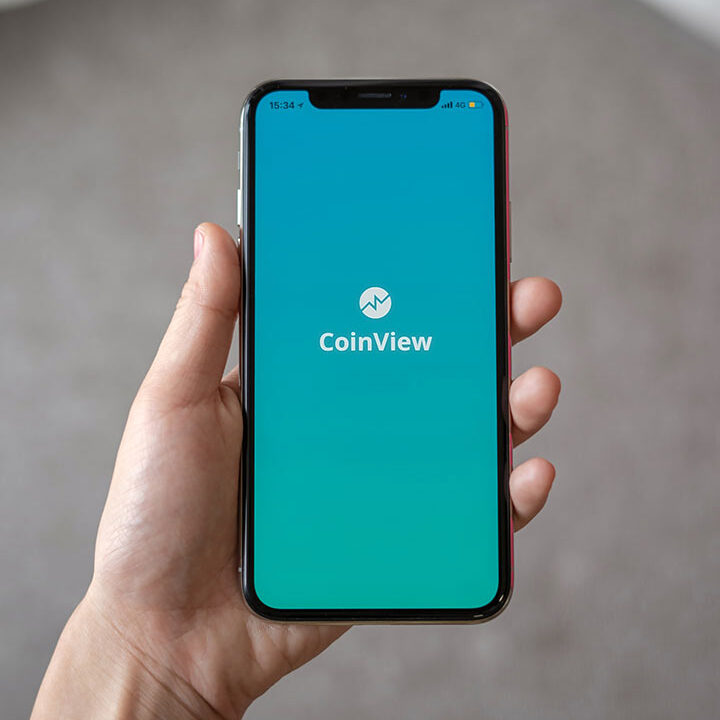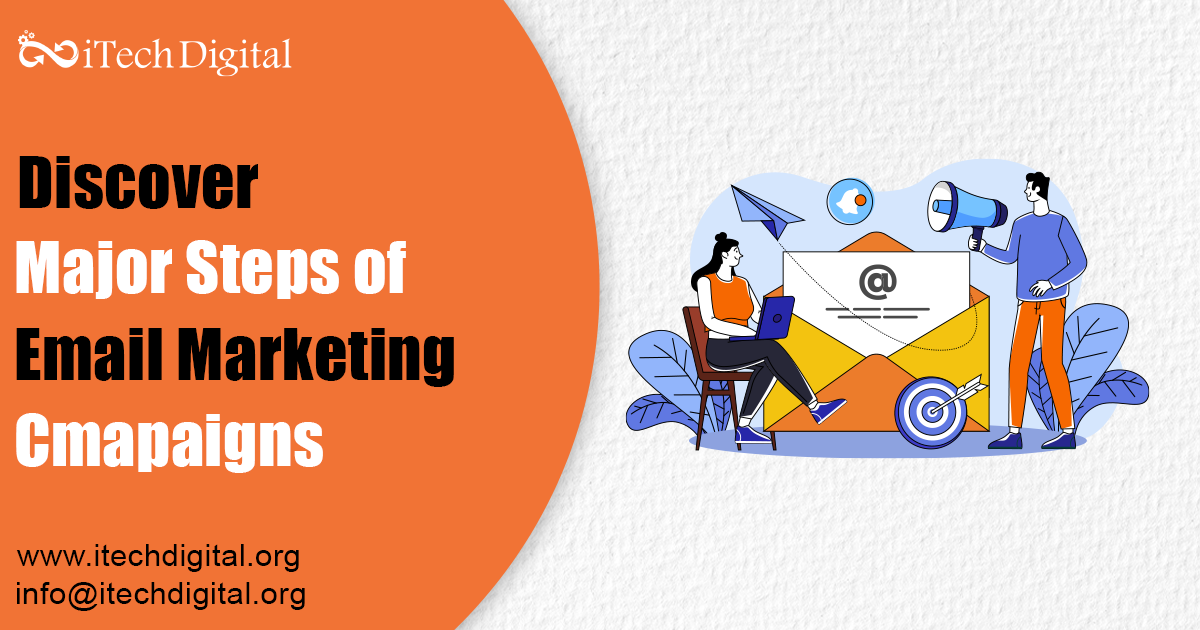Major Steps of Email Marketing Campaigns
Email marketing entails a series of strategic efforts aimed at engaging multiple recipients. These campaigns are tailored to reach subscribers at opportune moments, delivering valuable content and pertinent offers. By leveraging email campaigns, businesses can foster deep and trusting relationships with their customer base Email Marketing.
Types of Email Marketing
Email marketing can broadly be categorized into two main types: inbound and outbound. Each type serves distinct purposes and targets specific audiences.
Inbound Email Marketing
Inbound email marketing involves sending marketing emails to existing subscribers. It is tailored to customers at various stages of their journey and often relies on buyer personas for audience segmentation. Inbound campaigns aim to enhance brand awareness, boost engagement, and nurture customer loyalty. Importantly, this approach is consent-based, targeting individuals who have opted to receive marketing communications.
Outbound Email Marketing
Conversely, outbound email marketing casts a wider net, targeting individuals not yet on the email list. Its primary objective is to heighten brand visibility among potential customers who haven’t interacted with the product or service. Unlike inbound marketing, outbound campaigns do not require prior consent and are typically based on ideal customer profile research.
Types of Email Marketing Campaigns
Email marketing campaigns can be further classified based on whether they are inbound or outbound. Below, we explore various types of campaigns within each category.
1. Inbound Email Marketing Campaigns
1.1 Recurring Email Campaigns
Recurring campaigns are sent on a regular schedule to a defined audience. These campaigns nurture customer relationships, provide value to subscribers, and disseminate regular updates or promotional content. They are often automated to ensure consistency and alignment with the brand’s tone and goals.
1.2Advantages:
- Facilitates consistent communication
- Strengthens audience relationships
- Drives engagement
- Keeps subscribers informed
- Enhances sender reputation
1.3Disadvantages:
- Risk of overwhelming subscribers
- Not suitable for all audiences
2. Onboarding Campaigns
Onboarding campaigns introduce new subscribers to product/service features and aid in platform navigation. They typically comprise a welcome email followed by a series guiding users on utilizing specific features effectively.
3. Seasonal Campaigns
Seasonal campaigns are tailored to specific times of the year or holidays, blending educational and promotional content to engage subscribers. For instance, a hotel might promote summer destinations and activities before the season begins.
4. One-off (Standalone) Email Campaigns
One-off campaigns are solitary emails sent for one-time promotions, product updates, events, or to diversify content strategy. While they lack a predefined schedule, they are targeted to a specific audience.
4.1 Advantages:
- Allows for testing and experimentation
- Facilitates immediate communication
- Showcases brand aspects beyond regular content
- Diversifies content marketing
4.2Disadvantages:
- Disruption to usual communication flow
- Risk of spam complaints
- Requires additional resources for unique design and copywriting
- Outbound Email Marketing Campaigns
4.3 Lead Generation Campaigns
Lead generation campaigns target new audiences based on ideal customer profiles. These campaigns employ data-driven personalization to engage prospects by addressing their interests or pain points.
5. Benefits of Email Marketing
Email marketing offers numerous advantages that directly impact business outcomes:
- Increase Brand Awareness
- Generate Website Traffic
- Drive Sales and Revenue
- Boost Other Marketing Channels
- Keep Customers Engaged
5.1Define you’re Goals:
Before diving into creating your email campaign, it’s crucial to define clear and measurable objectives. Whether you aim to increase sales, boost website traffic, or enhance brand awareness, setting specific goals will guide your campaign strategy and help evaluate its success.
5.2Build a Quality Email List:
A high-quality email list forms the foundation of a successful campaign. Focus on organically growing your subscriber list by offering valuable incentives, such as exclusive content or discounts, in exchange for email sign-ups. Avoid purchasing email lists, as they often lead to low engagement and deliverability issues.
5.3Choose the Right Email Marketing Platform:
Selecting the right email marketing platform is essential for managing and automating your campaigns effectively. Consider factors such as ease of use, customization options, analytics features, and scalability when choosing a platform that aligns with your needs and budget.
5.4Create Compelling Content:
Compelling content is the key to capturing subscribers’ attention and driving action. Craft attention-grabbing subject lines, personalize email content based on recipient preferences, and incorporate visually appealing elements such as images and videos. Keep your messaging clear, concise, and relevant to your audience’s interests.
5.5Design Engaging Email Templates:
Well-designed email templates enhance brand consistency and professionalism while optimizing readability and user experience. Choose responsive templates that adapt to various devices and screen sizes, ensuring that your emails display correctly across desktops, tablets, and smartphones.
5.6Implement A/B Testing:
A/B testing, also known as split testing, allows you to experiment with different elements of your email campaigns to identify what resonates best with your audience. Test variables such as subject lines, sender names, calls-to-action, and content layouts to optimize performance and maximize results.
5.7Automate Workflows:
Automation streamlines repetitive tasks, saves time, and ensures timely delivery of relevant content to subscribers. Set up automated workflows for welcome emails, abandoned cart reminders, follow-up sequences, and personalized recommendations based on subscriber actions and preferences.
5.8Monitor and Analyze Performance:
Regularly monitor key performance metrics such as open rates, click-through rates, conversion rates, and unsubscribe rates to gauge the effectiveness of your email campaigns. Utilize analytics tools provided by your email marketing platform to gain insights into subscriber behavior and identify areas for improvement.
5.9 Iterate and Improve:
Email marketing is an iterative process that requires continuous optimization and refinement. Analyze campaign performance data, gather feedback from subscribers, and experiment with new strategies to iterate and improve your email marketing efforts over time.
5.10Gain Valuable Business Data:
Leveraging email marketing tools and automation enables businesses to streamline workflows, personalize content, and optimize engagement. Automation not only saves time but also ensures timely and relevant communication, contributing to overall marketing effectiveness.
5.2 Increase Brand Awareness:
Email marketing helps businesses spread the word about their brand, products, and services by sharing valuable resources, educational content, news, updates, and more with subscribers. By consistently communicating with subscribers through emails, businesses can reinforce their brand identity, values, and offerings, thus increasing awareness among their target audience.
5.3Generate Website Traffic:
Through email marketing, businesses can drive more traffic to their website by including links to relevant content, articles, blog posts, landing pages, and sales pages in their emails. By enticing subscribers with snippets of compelling content or exclusive offers, email campaigns encourage them to visit the website for further engagement, leading to increased website traffic.
5.4Drive Sales and Revenue:
Email marketing enables businesses to promote their products and services directly to subscribers, thereby influencing purchasing decisions and driving sales. By strategically incorporating promotional offers, discounts, product recommendations, and call-to-action buttons in their emails, businesses can encourage recipients to make purchases, ultimately boosting revenue generation.
5.5Boost Other Marketing Channels:
Email marketing serves as a powerful tool for integrating various marketing channels and driving traffic to them. Businesses can include links to their social media profiles, blog posts, landing pages, events, and other marketing assets in their emails, encouraging subscribers to engage with these channels. This cross-channel promotion enhances overall marketing effectiveness and extends the reach of the brand.
5.6Understand you’re Audience:
Knowing your target audience is fundamental for crafting tailored and relevant email content. Conduct market research, analyze customer data, and segment your audience based on demographics, behavior, and preferences. Understanding your audience enables you to personalize content and improve engagement rates.
5.7Keep Customers Engaged:
Email marketing allows businesses to maintain ongoing communication with their customers, keeping them engaged and interested in the brand. By sending a variety of engaging and relevant content, such as newsletters, product updates, industry insights, and exclusive offers, businesses can nurture relationships with customers and prevent them from losing interest or becoming inactive.
5.8Gain Valuable Business Data:
Email marketing provides businesses with valuable insights into customer behavior, preferences, and interactions. By tracking email open rates, click-through rates, conversion rates, and other metrics, businesses can gather data to understand what resonates with their audience and optimize their email campaigns accordingly. Additionally, businesses can collect feedback through surveys and forms sent via email, enabling them to make informed decisions and improve their products, services, and marketing strategies.
Conclusion:
By following these major steps, you can create impactful email marketing campaigns that resonate with your audience, drive engagement, and deliver measurable results. Remember to stay informed about industry best practices, adapt to evolving trends, and prioritize delivering value to your subscribers to maintain long-term success in email marketing.
Comments (0)
Comments are closed.










Jennifer Martinez:
2024-04-03Remember to leverage compelling visuals and multimedia elements to enhance the aesthetic appeal of your emails and reinforce your brand identity. Consistency in messaging and branding across all communication channels strengthens brand recognition and loyalty. Lastly, don’t underestimate the power of storytelling – weaving narratives into your email content captivates readers and makes your messages more memorable.
Michael Clark:
2024-04-03Don’t overlook the importance of maintaining a clean and updated email list – regularly removing inactive or unsubscribed contacts ensures better deliverability and engagement rates. Implementing robust email security measures protects both your brand’s reputation and your recipients’ privacy. And always strive for authenticity and transparency in your communications to build trust with your audience.
Emily Brown:
2024-04-03Engagement doesn’t end after sending the email – actively nurturing relationships through follow-ups and feedback loops is key. Encouraging interaction through surveys or feedback forms demonstrates a commitment to customer satisfaction. Additionally, integrating social sharing buttons extends the reach of your email content, amplifying its impact across various platforms.
David Wilson:
2024-04-03Personalizing content based on recipient preferences and behaviors fosters a sense of connection and relevance. Utilizing automation tools streamlines workflows and ensures timely delivery of emails based on predetermined triggers. Moreover, implementing A/B testing allows for data-driven decisions, optimizing elements such as subject lines, visuals, and messaging for maximum impact.”
Sarah Thompson:
2024-04-03Building a quality email list is fundamental; opt-in strategies ensure that recipients are genuinely interested in your content. Then, focus on crafting valuable and relevant content that resonates with your audience’s needs and interests. Timing is also critical – scheduling emails at optimal times increases the likelihood of engagement. Lastly, continuous testing and optimization refine your approach for better results over time.
John Smith
2024-04-03It all starts with meticulous planning, understanding your audience, and defining clear objectives. Once you’ve established these foundations, designing visually appealing and responsive email templates becomes essential. Don’t forget to incorporate compelling call-to-action buttons, guiding readers towards desired actions. And always remember to optimize for mobile devices, as a significant portion of email opens occur on smartphones.
Mary Jones
2024-04-03First off, crafting a captivating subject line is crucial to grab attention amidst the sea of emails flooding inboxes. Then, segmenting your audience ensures tailored content delivery, maximizing engagement. Additionally, personalization adds a human touch, fostering connections with recipients. Regularly analyzing metrics helps refine strategies for continuous improvement.